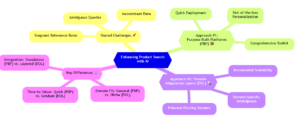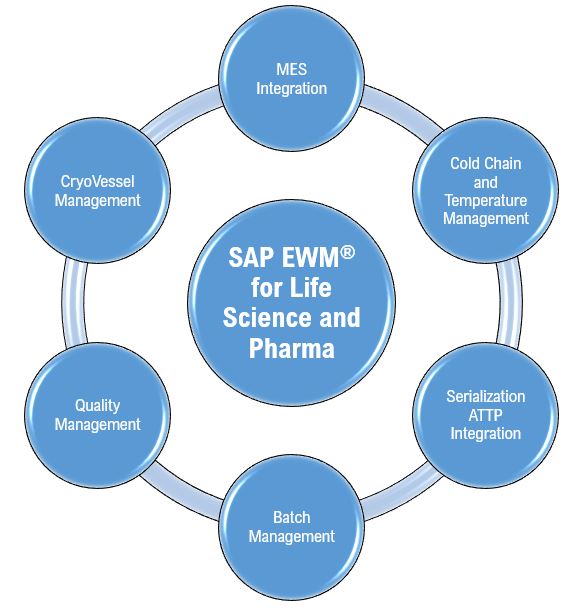1. Introduction
In today’s digital retail landscape, customers demand search experiences that intuitively guide them to their desired products. As product catalogs grow, and user queries become more conversational, traditional keyword-based search struggles to keep pace. Enter Artificial Intelligence (AI) and Machine Learning (ML) models that go beyond simple keyword matching to truly understand user intent, context, and evolving marketplace trends.
This blog explores two approaches to improving product search using AI: adopting a purpose-built platform (with an example of a vendor solution like Constructor) or integrating a Domain Adaptation Layer (DAL)—as exemplified by Infosys’ approach—to enhance your existing infrastructure. Understanding these methods and their trade-offs will help you choose a strategy aligned with your specific needs, resource constraints, and long-term goals.
2. The Challenges of Modern Product Search
Despite the central role of search in online shopping, it faces several hurdles:
- Ambiguous Queries
Users often enter descriptive queries (“lightweight running shoes” or “ergonomic office chair”) rather than structured product names or SKUs. - Inconsistent Data
Large catalogs can contain items with varied naming conventions, incomplete metadata, or rapidly changing attributes. - Stagnant Relevance Rules
Relying solely on fixed keyword or category hierarchies makes it difficult to surface the most relevant products, especially as new trends or seasonal priorities emerge.
AI-driven search addresses these issues by understanding language, personalizing results, and learning from user interactions over time. Two prominent solution paths have emerged: turnkey AI search platforms (purpose-built platforms) and domain-specific adaptation layers.
3. Approach #1: Purpose-Built AI Search & Discovery Platforms
3.1. What Are Purpose-Built AI Platforms?
A purpose-built AI search and discovery platform is an end-to-end solution integrating AI at every stage of the customer’s shopping journey. These platforms often have roots in advanced ML and NLP, providing online retailers with a comprehensive toolkit that can be deployed relatively quickly and with minimal need for internal AI expertise or large-scale infrastructure changes.
Example: Constructor
As one illustration of a purpose-built platform, Constructor offers a robust package that includes search, browse, autosuggest, and recommendations. It focuses on delivering immediate, personalized results based on user behavior—clicks, add-to-carts, and purchases—so search results rapidly become more aligned with actual shopper intent.
3.2. Key Benefits of Purpose-Built Platforms
- Full-Stack Solution
These platforms often handle multiple facets of product discovery (search, browse, autosuggest, recommendations) as a unified package, reducing fragmentation in your tech stack. - Immediate Personalization
Models learn from user behavior, allowing for quick alignment of search results with shopper intent. - Quick Deployment
Most purpose-built platforms can be integrated relatively fast, making them ideal for retailers who prefer an out-of-the-box product discovery engine that doesn’t require building and training custom models from scratch.
3.3. Use Case Fit
Purpose-built platforms are well-suited for organizations with limited in-house AI expertise or those needing a quick, comprehensive uplift to their existing search capabilities. They provide a proven framework that can start delivering value without extensive custom development.
4. Approach #2: Domain Adaptation Layer (DAL)
4.1. What Is a Domain Adaptation Layer?
Rather than replacing your current search infrastructure with a standalone platform, a Domain Adaptation Layer (DAL) enhances what you already have. By leveraging advanced NLP, ML models, and domain-specific semantics, a DAL adds intelligence to your existing systems.
Example: Infosys’ DAL
Infosys’ DAL approach centers around deeply understanding a retailer’s product domain. It employs custom vocabularies, taxonomies, and classification rules to handle niche products, industry-specific terminology, or complex attributes that don’t align with generic search models.
4.2. Key Benefits of a DAL
- Minimal Code Changes
DAL solutions integrate seamlessly with your current infrastructure, reducing the need for large-scale re-platforming. - Domain-Specific Intelligence
DAL solutions excel in scenarios with unique product terminology or complex attributes by building a rich semantic layer tailored to your product data. - Adaptability & Scalability
As your business or product line changes, the DAL refines its language models, ensuring search remains accurate, context-rich, and intuitive. - Incremental Enhancements
Instead of a “big bang” approach, you can enable AI-powered query understanding for select product categories and expand as results and confidence grow.
4.3. Use Case Fit
A DAL approach is ideal for organizations that have heavily invested in existing search solutions and want to add a layer of intelligence tailored to their industry. It’s particularly useful for domains requiring controlled, incremental improvements and deep semantic understanding.
5. Key Differences Between Purpose-Built Platforms and Domain Adaptation Layers
- Integration Approach
– Purpose-Built Platforms: Provide comprehensive, standalone capabilities that may replace or run alongside your existing solution.
– Domain Adaptation Layer: Sits atop your current infrastructure, minimizing disruption and code changes. - Customization and Domain Knowledge
– Purpose-Built Platforms: Offer out-of-the-box personalization and robust ML, leveraging general e-commerce best practices.
– Domain Adaptation Layer: Prioritizes domain-specific semantics, enabling deeply customized vocabularies and rules that reflect your specific product universe. - Scalability and Time-to-Value
– Purpose-Built Platforms: Deliver quick wins by offering production-ready AI search without extensive training or setup.
– Domain Adaptation Layer: Emphasizes gradual improvement. It integrates domain knowledge and continuously adapts over time but may require more upfront effort in data preparation and modeling.

6. Looking Ahead: Hybrid and Complementary Approaches
These two approaches are not mutually exclusive. A retailer might:
- Start with a Purpose-Built Platform to achieve immediate improvements, then integrate a domain-specific layer as the product taxonomy grows more complex or the user base more varied.
- Begin with a Domain Adaptation Layer to enhance existing systems gradually and later incorporate additional vendor tools or platforms as needed.
As AI technology advances, expect increasingly nuanced solutions that blend domain adaptation, personalization, and semantic understanding. By continuously refining product search, retailers can help shoppers find the right products faster, boosting satisfaction, loyalty, and long-term sales.
7. Conclusion
Choosing between a turnkey purpose-built AI platform and a domain adaptation approach depends on your current infrastructure, business priorities, and timeline. Purpose-built solutions offer a holistic approach that can quickly elevate your search experience while domain adaptation carefully tailors enhancements to your existing systems and unique domain requirements.
By understanding how these approaches complement and contrast, you can make informed decisions that lead to richer, more intuitive, and ultimately more profitable product search experiences.
8. References
- Constructor: https://constructor.com/
- Infosys TechCompass: Generalization to Specialization – Domain Adaptation of Large Language Models
- For More Information on Infosys Domain Adaptation Layer Implementations contact: Lakshmi R.









